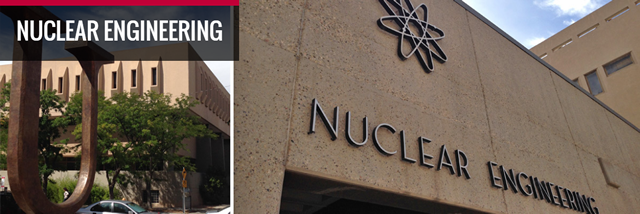
Nuclear Engineering ETDs
Publication Date
Fall 11-15-2017
Abstract
The inverse kinetics method, is a method to calculate a reactor’s reactivity profile from its power profile. In this thesis, the reactivity profile corresponding to pulse operations of the Annular Core Research Reactor (ACRR) was sought. Of specific interest was the shutdown reactivity of the reactor following the pulse. This required accounting for delayed beryllium photoneutrons that are present in the ACRR in addition to U-235 delayed neutron precursors. The power profiles of the pulses were experimentally measured using a diamond photoconductive detector (PCD). Using the inverse kinetics equation, a computer code was written to numerically calculate the reactivity corresponding to the PCD signal. It was found that the PCD’s signal was only proportional to the reactor power before and during a pulse. Following a pulse, the PCD lost this proportionality because its response became dominated by fission product and activation gamma rays. Attempts were made to subtract the unwanted gamma ray contribution from the PCD signal. This allowed the reactivity to be roughly determined for tens of seconds following the pulse before the signal strength became too low. The reactivity before and during a pulse could accurately be calculated without the need to correct the PCD signal. This thesis also provides a detailed derivation of the point kinetics equations and inverse kinetics equation, and explores the behavior of the inverse kinetics equation in detail.
Keywords
Reactivity, Nuclear Reactor, Inverse Method, Inverse Kinetics, ACRR
Document Type
Thesis
Language
English
Degree Name
Nuclear Engineering
Level of Degree
Masters
Department Name
Nuclear Engineering
First Committee Member (Chair)
Robert Busch
Second Committee Member
Adam Hecht
Third Committee Member
Cassiao de Oliveira
Fourth Committee Member
Edward Parma
Recommended Citation
Ball, Thomas A.. "The Inverse Kinetics Method and Its Application to the Annular Core Research Reactor." (2017). https://digitalrepository.unm.edu/ne_etds/66


